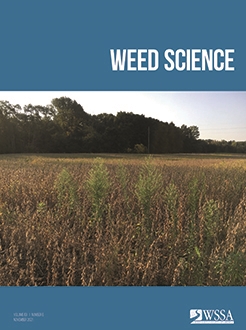Populations of rigid ryegrass (Lolium rigidum Gaudin) from southern Australia have evolved resistance to the thiocarbamate herbicide prosulfocarb. The inheritance of prosulfocarb resistance was explored by crossing resistant (R) and susceptible (S) individuals. In all families within each cross, except 16.2, the response of the F1 was intermediate between the parents, suggesting that resistance is inherited as a single, partially dominant trait. For 16.2, the response of the F1 was more similar to the S parent, suggesting resistance may be a recessive trait in this population. Segregation at the discriminating dose of 1,200 g ai ha–1 prosulfocarb in population 375-14 fit the ratio (15:1) consistent with two independent dominant alleles; in population 198-15, it fit a ratio (13:3) for two independent alleles, one dominant and one recessive; and in population EP162, it fit a ratio (9:7) for two additive dominant alleles. In contrast, segregation of population 16.2 fit a ratio (7:9) consistent with two independent recessive alleles contributing to prosulfocarb resistance. Four different patterns of resistance to prosulfocarb were identified in different R populations, with inheritance as a dominant allele, dominant and recessive, additive dominant and as an independent recessive allele. This suggests there are several different mechanisms of prosulfocarb resistance present in L. rigidum.
How to translate text using browser tools
1 July 2021
Inheritance of Evolved Thiocarbamate Resistance in Rigid Ryegrass (Lolium rigidum) Populations from Australia
David J. Brunton,
Peter Boutsalis,
Gurjeet Gill,
Christopher Preston
ACCESS THE FULL ARTICLE

Weed Science
Vol. 69 • No. 6
November 2021
Vol. 69 • No. 6
November 2021
Herbicide resistance
prosulfocarb
resistance evolution
thiocarbamates





